I have tried to evaluate an OpenMPI program with Matrix Multiplication algorithm, the written code scales very well on a single thread per core machine in our Laboratory (close to ideal speedup within 48 and 64 cores), However, on some other machines which are hyperthreaded there is strange behavior, as you can see in the screenshot from htop I realized the CPU utilization when I run the same experiment with the same command is different and strange, I executed the program with
mpirun --bind-to hwthread--use-hwthread-cpus -n 2 ...
Here I bind the MPI workers to each hwthread, and can be seen with -n 2 which means I overwrite the variable in such a way to bind the execution on two processors (here hwthreads), however, seems it uses another hwthread with more or less 50% of utilization as well! I found this strange because there is not any extra CPU utilization on other machines, I tried this experiment many times and I'm sure this is not a temporary check or sth by OS and is due to the execution model of OpenMPI.
I appreciate it if someone could explain this behavior and extra CPU utilization when I execute this on the hyper-threaded machine.
The output of lscpu is as below:
lscpu
Architecture: x86_64
CPU op-mode(s): 32-bit, 64-bit
Byte Order: Little Endian
Address sizes: 43 bits physical, 48 bits virtual
CPU(s): 32
On-line CPU(s) list: 0-31
Thread(s) per core: 2
Core(s) per socket: 16
Socket(s): 1
NUMA node(s): 1
Vendor ID: AuthenticAMD
CPU family: 23
Model: 1
Model name: AMD Ryzen Threadripper 1950X 16-Core Processor
Stepping: 1
Frequency boost: enabled
CPU MHz: 2200.000
CPU max MHz: 3400.0000
CPU min MHz: 2200.0000
BogoMIPS: 6786.36
Virtualization: AMD-V
L1d cache: 512 KiB
L1i cache: 1 MiB
L2 cache: 8 MiB
L3 cache: 32 MiB
The version of OpenMPI for all machines is the same 2.1.1.
Maybe Hyperthreading is not the case and I was misled by this, but the only big difference between these environments are 1) the Hyperthreading and 2) Clock Frequency of the processors which is based on different CPUs is different between 2200 MHz to 4.8 GHz.
